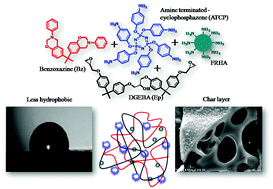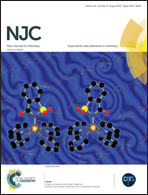Development of halogen-free flame retardant phosphazene and rice husk ash incorporated benzoxazine blended epoxy composites for microelectronic applications
Abstract
The present study is focused on the synthesis and characterization of flame retardant amine-terminated cyclophosphazene and silane functionalized rice husk ash reinforced benzoxazine blended epoxy composites as a halogen-free flame retardant material (ATCP/FRHA/Bz-Ep). FT-IR spectroscopy, scanning electron microscopy (SEM), X-ray diffraction analysis, contact angle measurements, dielectric constant, DSC, TGA, UL-94, LOI and cone calorimetry were used to characterize the surface morphology as well as the structural, electrical, thermal and flame retardant properties of the resultant ATCP/FRHA/Bz-Ep composite material. The experimental results suggested that ATCP/FRHA/Bz-Ep composites exhibit better flame retardant and dielectric performance compared to that of a neat Bz–Ep material. A plausible mechanism of the fire retardant ATCP/FRHA/Bz-Ep composite material is hypothesized based on the results of cone calorimetric, thermal and electrical analysis. From the abovementioned results, it was concluded that the ATCP/FRHA/Bz-Ep composite can be used as an electrical resistant material for electronic and microelectronic applications.


 Please wait while we load your content...
Please wait while we load your content...